Ant Types in Texas
Contents
What you need to know about the types of ants in Texas. Ant, though small in size, is quite a big deal. Let us now learn about them, particularly those in Texas.
Facts About Ants
Ants are social insects that live and work together in large groups. They range in size from a pinhead to a thumbnail. Ants are most easily identifiable by their physical appearance: all ants have three distinct body parts as their defining feature: a head, thorax, and abdomen- the three parts are marked for separation. And their heads are all equipped with a pair of bent antennae, which serve as a sense of touch and detect changes in the temperature.
A group of ants living together is called a colony. Within an ant colony, there are three different castes: workers, soldiers, and reproductive ones (king and queen). Only the reproductive members of the ant colony have wings- they are usually bigger than other ants in the colony. Ants vary in color and size depending on their specific species, and that color and size are usually a means to identify the species. You may have come across yellow, red, brown, or black ants, or sometimes you may find ants that are a combination of several different colors.
Texas Ant Species
Texas is home to a wide variety of ant species, including:
- Red imported fire ants (Solenopsis invicta)
- Carpenter ants (Camponotus spp.)
- Crazy ants (Nylanderia spp.)
- Texas leafcutter ants (Atta texana)
- Pharaoh ants (Monomorium pharaonis)
- Argentine ants (Linepithema humile)
- Pavement ants (Tetramorium caespitum)
- Acrobat ants (Crematogaster spp.)
- Harvester ants (Pogonomyrmex spp.)
- Little black ants (Monomorium minimum)
- Odorous house ants (Tapinoma sessile)
- Thief ants (Solenopsis molesta)
- Velvety tree ants (Liometopum occidentale)
- Bicolored arboreal ants (Dolichoderus bispinosus)
- Texas carpenter ants (Camponotus floridanus)
- Texas honey ants (Myrmecocystus mimicus)
- Black crazy ants (Paratrechina longicornis)
- Large yellow ants (Acanthomyops interjectus)
- Texas fire ants (Solenopsis xyloni)
- Texas leaf-cutting ants (Acromyrmex versicolor)
- Pyramid ants (Dorymyrmex pyramicus)
- Big-headed ants (Pheidole spp.)
- Field ants (Formica spp.)
- Honey pot ants (Myrmecocystus spp.)
- Strumigenys rostrata.
These are just a few of the many ant species found in Texas, and new species are still being discovered.
Invasive Ant Species in Texas
Invasive ants in Texas are considered harmful because they can outcompete native ant species for resources and alter the natural balance of ecosystems. Invasive ant species often have few natural predators, allowing them to grow and spread quickly, which can lead to ecological damage. Some invasive ants in Texas, like the red imported fire ant, also have painful stings that can harm people, pets, and livestock. Additionally, invasive ants can also cause damage to crops and infrastructure.
Several species of ants are considered invasive in Texas. Some of the most notable invasive ant species found in Texas include:
Red Imported Fire Ants
(Solenopsis invicta) These ants are notorious for their painful stings and aggressive behavior. They were accidentally introduced into the United States in the 1930s and have since spread throughout the southern states, including Texas.
Tawny Crazy Ants
(Nylanderia fulva) These ants are also known as Rasberry crazy ants, after the exterminator Tom Rasberry who first identified them in Texas in 2002. Small, reddish-brown ants can form massive colonies and displace native ant species. They have become a major pest in many parts of Texas.
Argentine Ants
(Linepithema humile) These tiny, brown ants are native to South America but have become invasive in many parts of the world, including Texas. They form large colonies and can displace native ant species, negatively impacting local ecosystems.
Imported Longhorned Ants
(Paratrechina longicornis) These ants are native to Africa but have become invasive in many parts of the world, including Texas. Small, brown ants form massive colonies and can displace native ant species.
Pharaoh Ants
(Monomorium pharaonis) These tiny, yellow ants are native to Africa but have become widespread in many parts of the world, including Texas. They are known for their ability to infest homes and buildings, and they can be difficult to control once they establish a colony.
It’s worth noting that not all species of ants that are found in Texas are invasive or harmful. Many native ant species play essential roles in maintaining healthy ecosystems and are not considered pests.
Beneficial Ants in Texas
It is important to note that while some species of ants can be considered beneficial in specific contexts, they can also be harmful in others. It is always best to consult with a pest management professional or another expert to determine the best action for dealing with an ant infestation or other pest issue.
Several types of ants found in Texas can be considered beneficial for different reasons. Here are a few examples:
Red Harvester Ants
(Pogonomyrmex barbatus): These ants can be beneficial for controlling insect pests in gardens and fields, as they are known to feed on various insects, including grasshoppers, caterpillars, and aphids.
Carpenter Ants
(Camponotus spp.): Although carpenter ants can be considered pests when infesting homes or other structures, they can also be beneficial in specific contexts. For example, they are essential decomposers in forest ecosystems, as they help break down dead wood and other organic matter.
Leafcutter Ants
(Atta spp.): These ants can also be considered beneficial for their role in the ecosystem. While they can damage crops in some areas, they are important decomposers and nutrient cyclers in tropical forest ecosystems. They also help to aerate the soil and promote plant growth by bringing organic matter from the forest floor to the surface.
Fire Ants
(Solenopsis invicta): Although fire ants are often considered a nuisance and can cause painful stings, they can also be beneficial in specific contexts. For example, they are known to feed on other insect pests, and their mounds can help to aerate and fertilize the soil.
Common Texas Ants
The Carpenter Ant
Carpenter ants are the largest ants you can find strolling around your house in Texas. They are described as an invasive species that have taken over the scene in Texas. The ants are giant; the queens can grow up to an inch in length. When nesting outdoors, carpenter ants often build their nests in dark, damp areas underneath fall trees, tree stumps, or under piles of wood. If, for some reason, they decide to settle down in a house, they build their nests inside the wood: maybe the structural wood, pillars, or doorposts of homes.
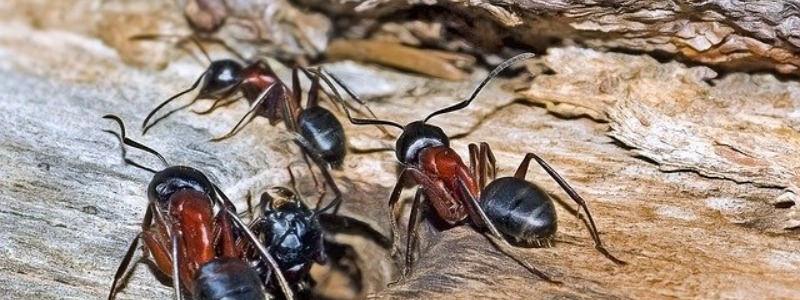
Identification, What they look like: Carpenter ants have big heads and abdomens that seem disproportionate to their bodies. They are brown and may have dark-colored abdomens. These big ants can measure from your small fingernail to your thumbnail. That is 0.64 to 2.5cm.
Rasberry Crazy Ants
Crazy ants are so named because they move about frantically and disorganizedly. They appear to have no direction in the movement, and as soon as they feel threatened, they run about much more frantically.
Identification, What they look like: Crazy ants are brown colored and resemble Carpenter Ants, except that they are a little smaller and generally lack the dark-colored abdomen of the carpenter ants.
Odorous House Ants
Odorous House Ants are black ants that can range in size from half the nail of your little finger to the full length of the nail of your little finger. They emit a very unpleasant, rotten coconut odor when threatened or crushed. They also have a painful sting and are quite aggressive.
Identification, What they look like: Odorous house ants can be dark brown or black and are less than 3 millimeters or 1/8 inches long. They will generally fit into your small fingernail. They are pretty agile, have small heads, and are most easily recognizable by their distinctive feature: their smell (rotten coconut smell when crushed).
Fire Ants
Fire ants are an aggressive species of ants and will attack perceived threats aggressively and in large numbers. Fire ants prefer to build their nests in open, sunny areas and generally avoid building nests in wooded areas or where there is a lot of shade. This keeps them out of the way of carpenter ants. However, Fire ants are highly aggressive and are known to deliver a powerful sting that can be extremely painful to both people and pets. Their stings are so bad that they are known to have caused anaphylaxis, which requires immediate medical attention.
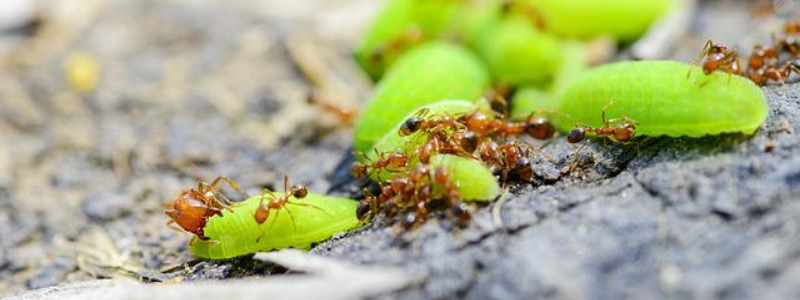
Identification, What they look like: These are dark reddish-brown ants and are slightly smaller in size than carpenter ants.
Little Black Ants
Little Black Ants are tiny kinds of ants that pose no harm to people. They are found in the natural environment in barks of living trees, hollow stumps of fallen trees, rock crevices, or in whichever suitable spot they are safe from flooding. They are known to abandon unsuitable nests, carrying eggs and nymphs in a migratory manner. When they enter a home, they are usually found in the kitchen or where the trash can is kept.
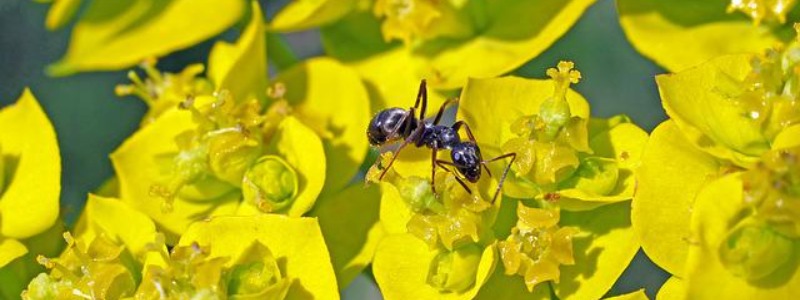
Identification, What they look like: Little black ants are not so little; they are at least about 2mm in length. They are black, as the name implies.
Pavement Ants
Pavement Ants get their names from the area where they choose to nest or build their colonies- pavements. These ants prefer nesting spots in the cracks and crevices found in or around pavements, sidewalks, foundations, and concrete slabs. They are not classified as dangerous types of ants.
Identification, What they look like: Pavement ants are dark brown ants that are just as small as little black ants. The major defining difference is that they are brownish.
Argentine Ants
Argentine ants are another type of ants that are not classified as dangerous and pose no significant risks to people or pets even when they nest in a home. However, they can potentially enter homes in large numbers, and when they do, they can contaminate food items and introduce bacteria into the home.
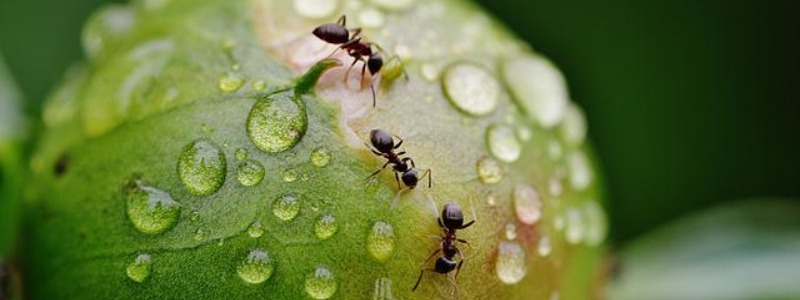
Identification, What they look like: Argentine ants are reddish-brown ants that typically have a length of around 3mm. They characteristically move in numbers. They are typically slow-moving until they feel threatened.
Are Ants Dangerous?
Regardless of what you have seen in Apocalyptic sci-fi movies, ants are not likely to invade your house at night and kill your entire family. However, ants still have the potential to be dangerous in many different ways, and that depends on the species. Some species, like Carpenter Ants, can be destructive to property; they can eat through all the wood with which a house is built. Other types of ants can introduce diseases and bacteria into a home, and others can sting, and that sting can cause physical harm to people and pets.
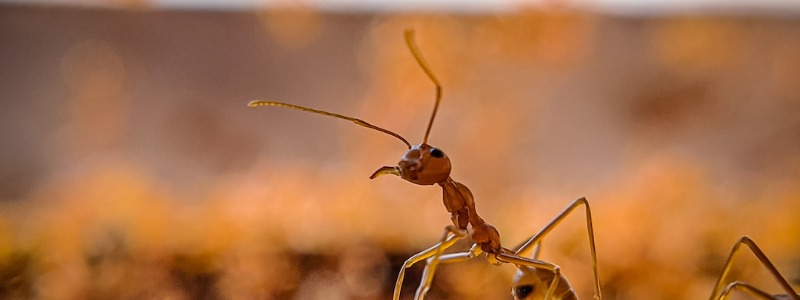
Carpenter ants are the most troublesome ant species. Carpenter ants can bite and cause severe damage to the wood that makes up your home, even though they do not spread disease or illness. If they nest inside a house, they are usually found in narrow and protected areas like doors, window frames, and walls. Carpenter ants from the South prefer to nest in open holes or voids and are unlikely to dig up wood further. They may damage a door, window frame, or a single wood plank, but they will not cause structural damage.
Why do I have Ants in my House?
Ants usually prefer to nest outdoors in the natural environment. They are particularly attracted to homes that offer them convenient places to nest, along with a constant supply of food and water. Once an ant colony has decided that your house is a convenient place to nest, it is only a matter of time before they find their way into your home. To make it short, ants come to your home for food.
But they should get food in the natural environment, you say. You are not wrong, but sometimes ants are forced into a home, while at other times, they are invited. This is what we mean: Ants will sometimes enter people’s homes when the weather is too harsh for them to live outdoors comfortably. Periods of heavy rain can flood their nests or make it impossible for them to forage for food. Drought can also make it hard for them to find food and water or can make the weather scorching hot.
When the weather is too hot or too cold, that can also drive ants indoors. They can also be invited when the house has lots of food. When the trash can is not adequately covered, the dining table is not correctly wiped down after a meal, or the kitchen is not vacuumed. All these can invite ants to find food in the house. Other things that attract ants to a house include gardens, clogged gutters, compost piles, and pet food.
How do Ants Get in?
Ants usually enter homes through cracks and crevices in the foundation or openings in or around windows, doors, and utilities they encounter, such as the air-conditioner. If you have any of these things on your house or any damages on your home’s exterior, you may be more at risk for an ant infestation or ants already in your house.
What do you Need to Do?
Repair any damages to your house exterior, such as the windows and doors. Coat or cover up any cracks or crevices in the building, both on the outside and inside.
Furthermore, ensure that your trash can has a tight-fitting lid.
Make sure you wipe down your dining table and vacuum your house regularly. Pay particular attention to the dining room and kitchen areas.

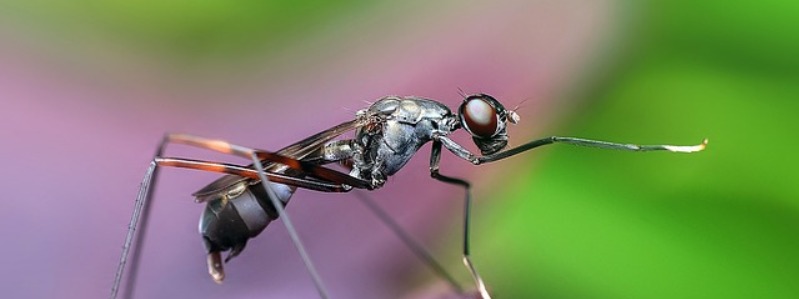
Wish you had photos of all the ants, not just some of them. I know the big red ants that usually have holes to nests with 2 ft diameter clearance of any weeds or plants around the nest entrance. Those have never bothered me as I’ve always found them in open fields/lots.
However, there’s a small ant that have taken over many pasturelands in east Texas where they have mounds a much as every 10 to 20 ft. From what I’ve heard they still cattle a lot. I believe I have those type of ants, which are not supposed to be native to Texas or the south, in my yard. They don’t have obvious trails and when I walk barefoot on the lawn they sting the heck out of my feet. Do you have an address where I can send one of those black ants to you to identify, once I catch one? I’m in San Antonio, TX. Or, maybe I can send a photo. According to your summary black ants do not bite. NOT TRUE.